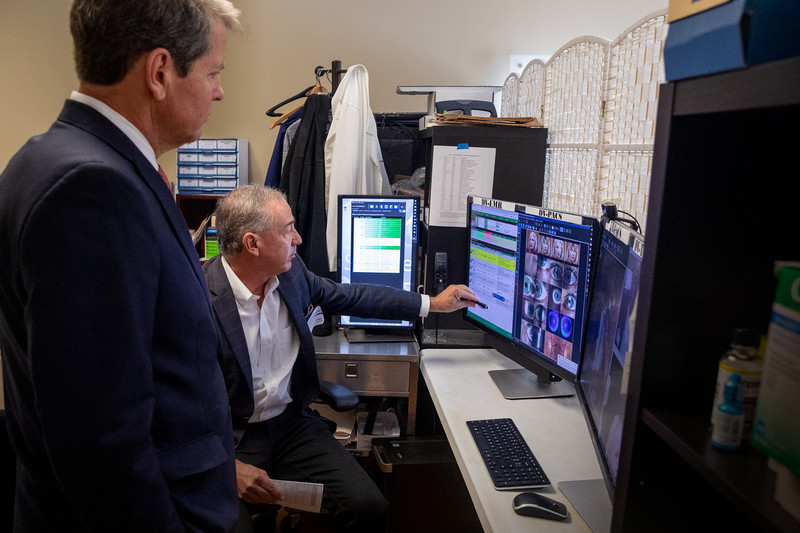July 24, 2019
A vision to better the health of rural Georgians
Startup Telmedix could make specialty medical care more accessible

“The status quo is unacceptable.”
Those five words from Gov. Brian Kemp in his first “State of the State” address last January referred to a longstanding issue confronting Georgia: the need to improve healthcare for rural residents.
In small communities across the state, seeing the doctor can be a major challenge. The family physician is often a long car drive away. A needed specialist may not be available within hundreds of miles.
Compounding the problem for many rural Georgians are a lack of health insurance and a reluctance to take time off work to travel long distances for doctor visits.
In July, Gov. Kemp was introduced to a potential answer to that challenge. On a bright weekday morning, he visited a community health center in eastern DeKalb County – hardly a rural location, but what the governor saw could be ideal in just such a setting.
In one room, a technician measured the vision of a patient using a digital device more precise than the phoropters typically used for eye exams. In another room, an ophthalmologist – alongside the governor – viewed images and data captured by the device.
The ophthalmologist, Dr. Keith Thompson, could render an accurate diagnosis based on those images and data. He could also talk with the patient, in real time, through flat-screen monitors, just as if he were in the exam room.
“This simulation represents how a patient in one location could be treated by an optometrist or ophthalmologist in a completely different location,” explained Dr. Thompson, who worked with researchers at Georgia Tech to develop the technology, now marketed under the GRA-backed startup Telmedix.
Telmedix’ approach is pure telemedicine, now an established solution for providing healthcare at great distances. But the system demonstrated by Dr. Thompson addresses an area of health often overlooked by those lacking access to doctors – eye care.
“It’s incredible the number of patients who come through this clinic, and others throughout the state, who don’t have eye care,” says Erick Hunt, who heads marketing for Telmedix. “From what we see, about a third of them are diagnosed with some kind sight-threatening disease, like glaucoma.”
Getting access to regular eye care is clearly a benefit to patients throughout Georgia. But the Telmedix system also works to the advantage of medical practitioners.
“Through our platform, an optometrist or ophthalmologist in one location can treat patients in as many as 5 different primary clinics,” Hunt says. “Imagine that model being replicated all over the state. A single doctor’s productivity can be doubled, and so does the capacity to serve a wider geographic area.”
Telmedix is in talks with a national provider to bring affordable eyewear to primary care clinics using Telmedix technology. Half of Georgians over 18 need corrective eyewear, and the addition of eyeglasses to those facilities would make it easier for patients to purchase them.
The potential of Telmedix to make an impact on healthcare extends far beyond eye health, Hunt says. The platform can be adapted to accommodate other kinds of medical specialists, who are often far out of reach to rural residents.
“This means that on a single visit to a primary care clinic, a patient could be seen and treated by several different specialists, such as a cardiologist, neurologist or ENT doctor who’s far away,” Hunt says. “Right now, these specialized physicians operate in siloes. Each has an office. But Telmedix’s technology platform can make them available in real time to patients in remote locations.”
GRA has provided Telmedix with early-stage grants from its venture development program.
